Art World
26 Art-World Women Celebrate the Women Who Inspire Them, From Feminist Art Critic Linda Nochlin to Arte Povera Legend Marisa Merz
For International Women's Day, meet 26 women who've inspired the art world.
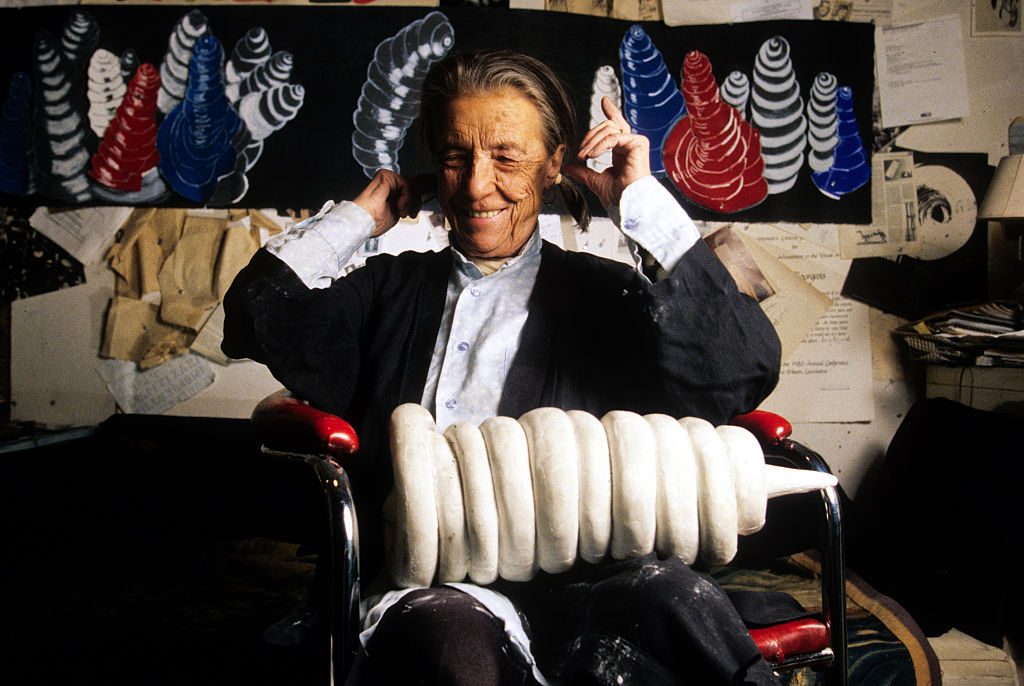
For International Women's Day, meet 26 women who've inspired the art world.

It is not always easy being a woman in this world, and being a woman in the art world can be doubly challenging. Gallery rosters and museum collections around the world have been skewed against women for centuries, and many of today’s top institutions still have yet to appoint a female director. Even so, there is a vast community of women in the art world, dedicated to supporting and uplifting each other.
On this International Women’s Day, we looked to a group of art-world women who inspire us, and we asked them to take a moment to shine a light on some of the women who have inspired them. From mothers and grandmothers to feminist critic Linda Nochlin, who first called into question the apparent absence of great women artists—here are 26 women worth celebrating today and every day.
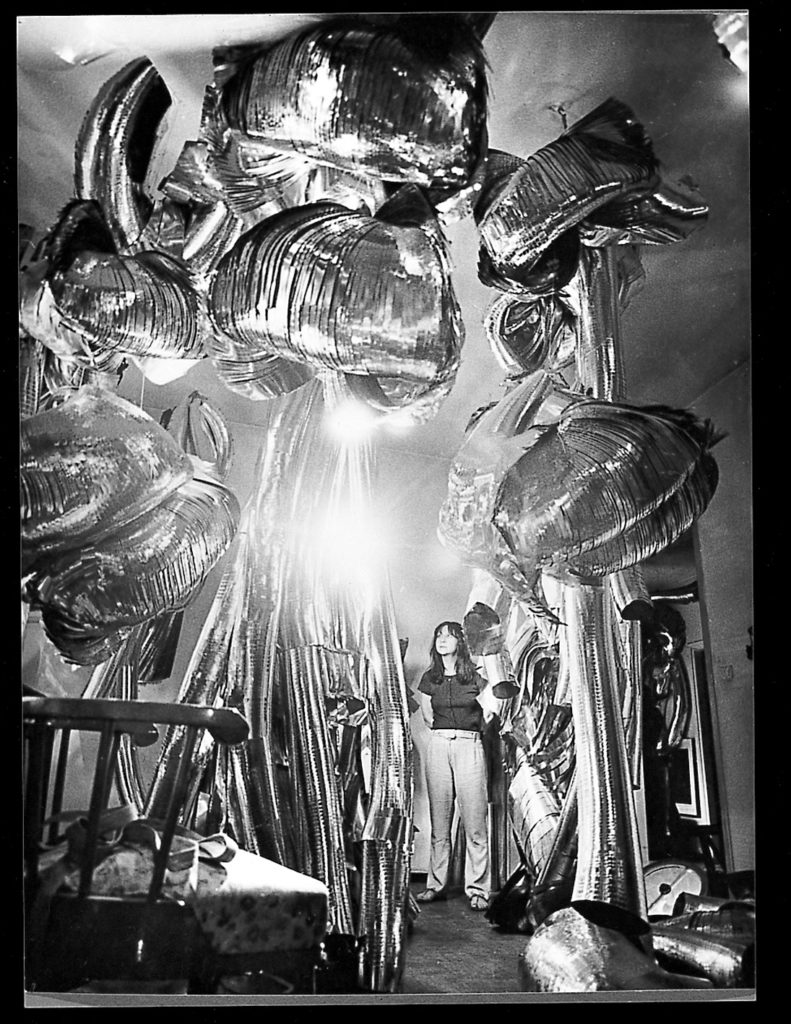
Marisa Merz with Living Sculpture, Turin, 1966. Courtesy Fondazione Merz.
As the daughter of this extraordinary woman, I can’t not mention Marisa Merz, both as an artist and also as a mother. I was guided and inspired by her quiet determination and her energy. Often going against what was rational, she lived by her own rules. These are qualities that, in addition to other things, I consider fundamental to be able to achieve one’s goals.
—Beatrice Merz, president, Fondazione Merz, Torino, Italy
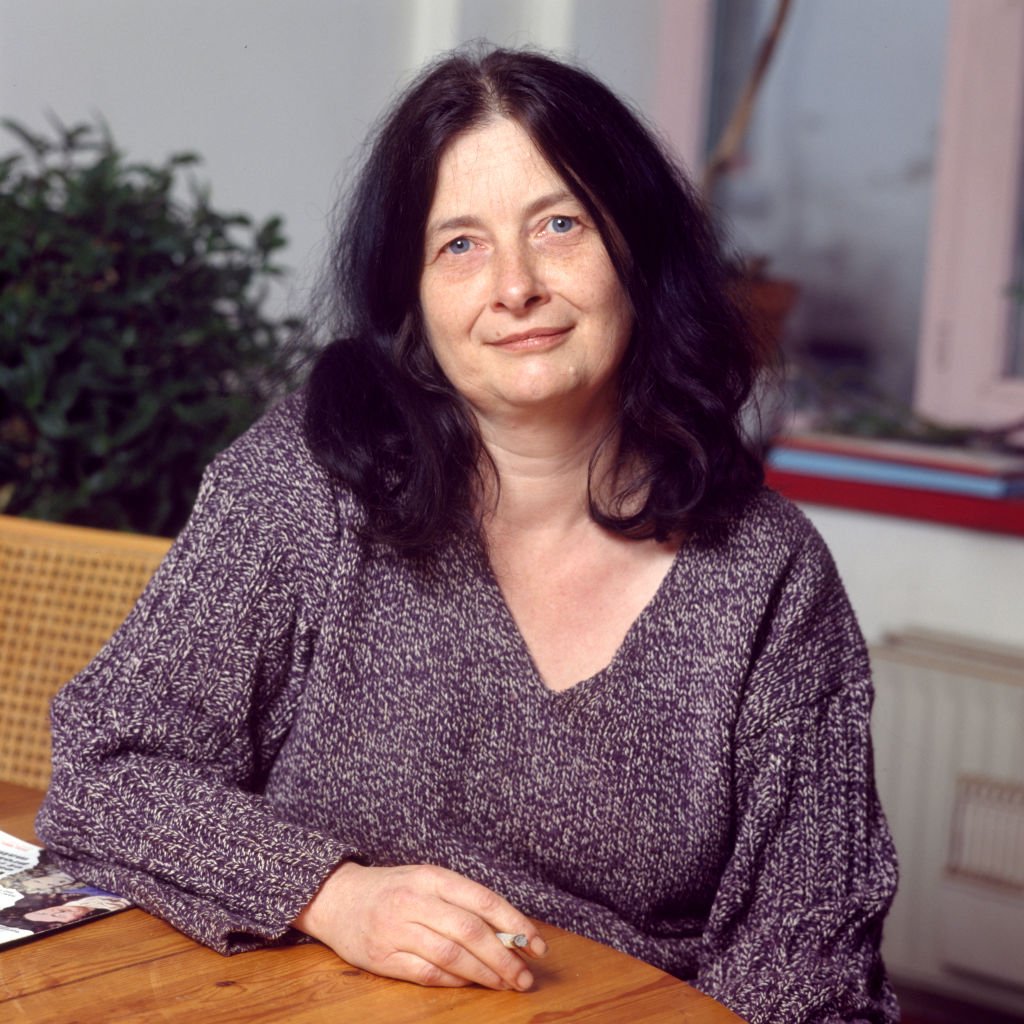
Belgian philosopher Isabelle Stengers in 1997. Photo by Louis MONIER/Gamma-Rapho via Getty Images.
The writing of Belgian philosopher Isabelle Stengers has been really influential in the thinking in my own work. I find her work provocative. It cuts through the illusions of our age to find alternative truths and gives me a sense of purposefulness. I think her concepts and writings are crucial for our time.
—Emma Talbot, artist
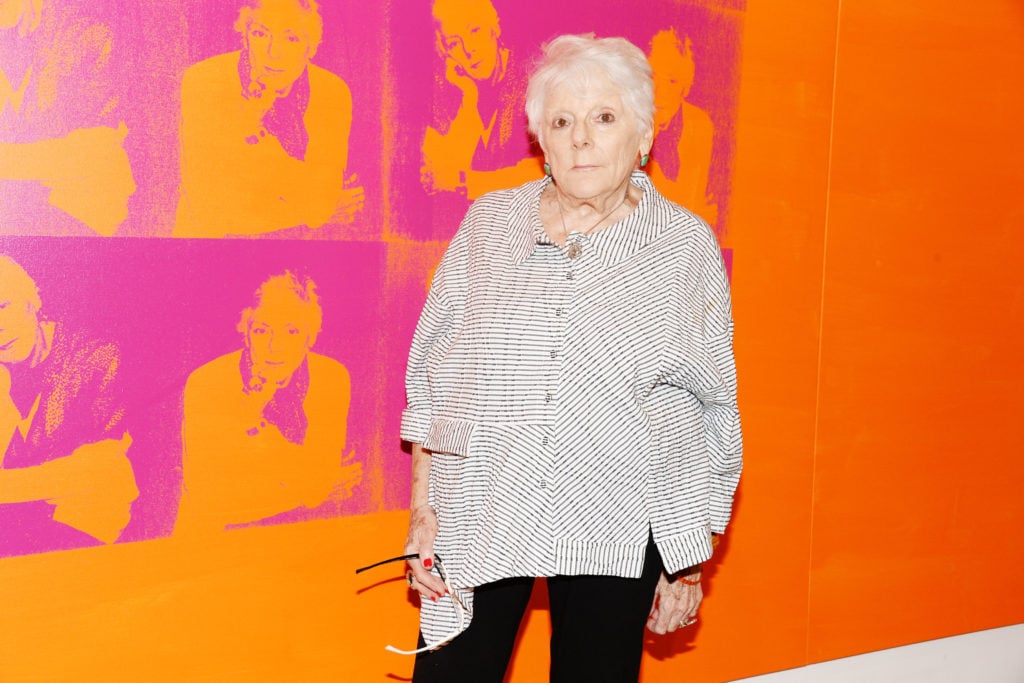
Linda Nochlin with Deborah Kass’s Orange Disaster (Linda Nochlin), 1997, on view in “BLOODFLAMES REVISITED” at Paul Kasmin Gallery, New York, in 2014. Courtesy of Patrick McMullan, photographer Clint Spaulding.
Linda Nochlin cleaved open history, beginning the field of feminist art history and scholarship; her work inspired me decades before we became friends in the early 2000s. She inspired my pursuit of feminist portraiture and storytelling, in her writing, and personally, from the sidelines, during visits to her home with opera, white wine, and long discussions about my work. Linda set an example for a life lived with generosity and curiosity alongside ground-shaking scholarship.
As I prepare for my first opera collaboration, a survey show of drawings this summer, a new book of drawings, marginalia, and text, and get ready for two exhibitions this spring in New York of ceramic sculpture and paper paintings, I am grateful to her for the example she set: follow the work, foremost, and worry about breaking things later.
—Natalie Frank, artist
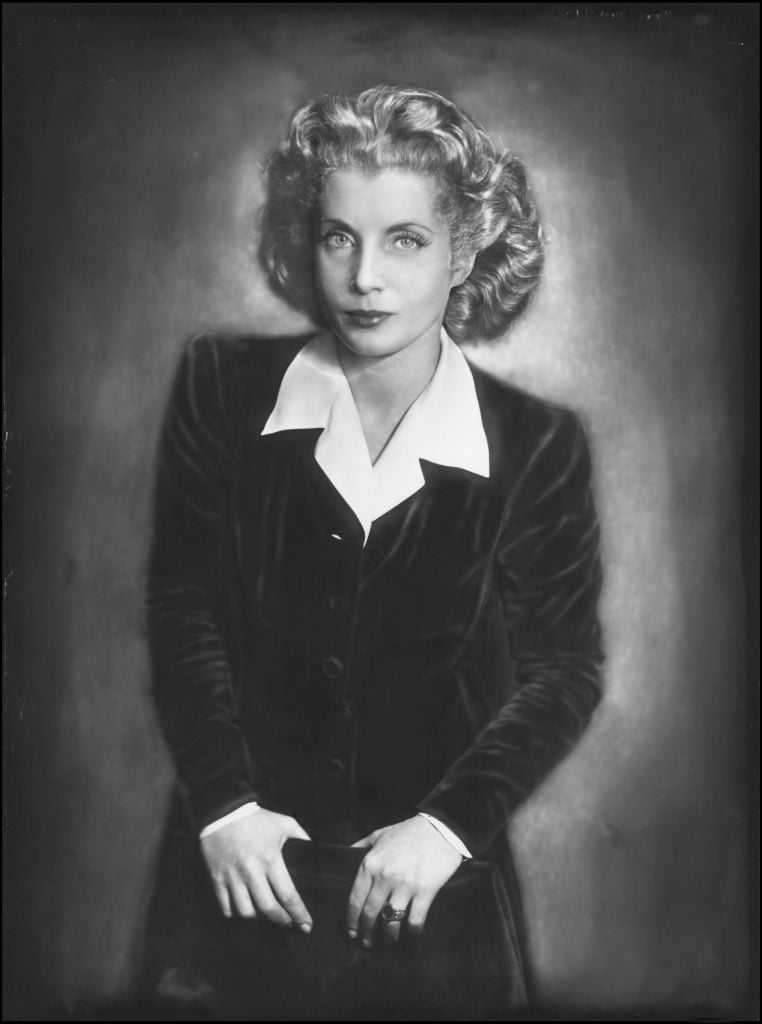
Palma Bucarelli, critic and art historian, Italian museologist. Portrait by Ghitta Carell, approx. 1935. Photo by Fototeca Gilardi/Getty Images.
Palma Bucarelli, the director of Galleria Nazionale d’Arte Moderna in Rome. It was the first museum to reopen in Italy after the war in 1944. Her visionary choices led her to acquire and present contemporary abstraction by artists such as Alberto Burri and Lucio Fontana with most of the cultural establishment against her. Bucarelli understood that museums had to be open to experimentation and not just conservation.
—Ilaria Bonacossa, director, Artissima, Torino, Italy
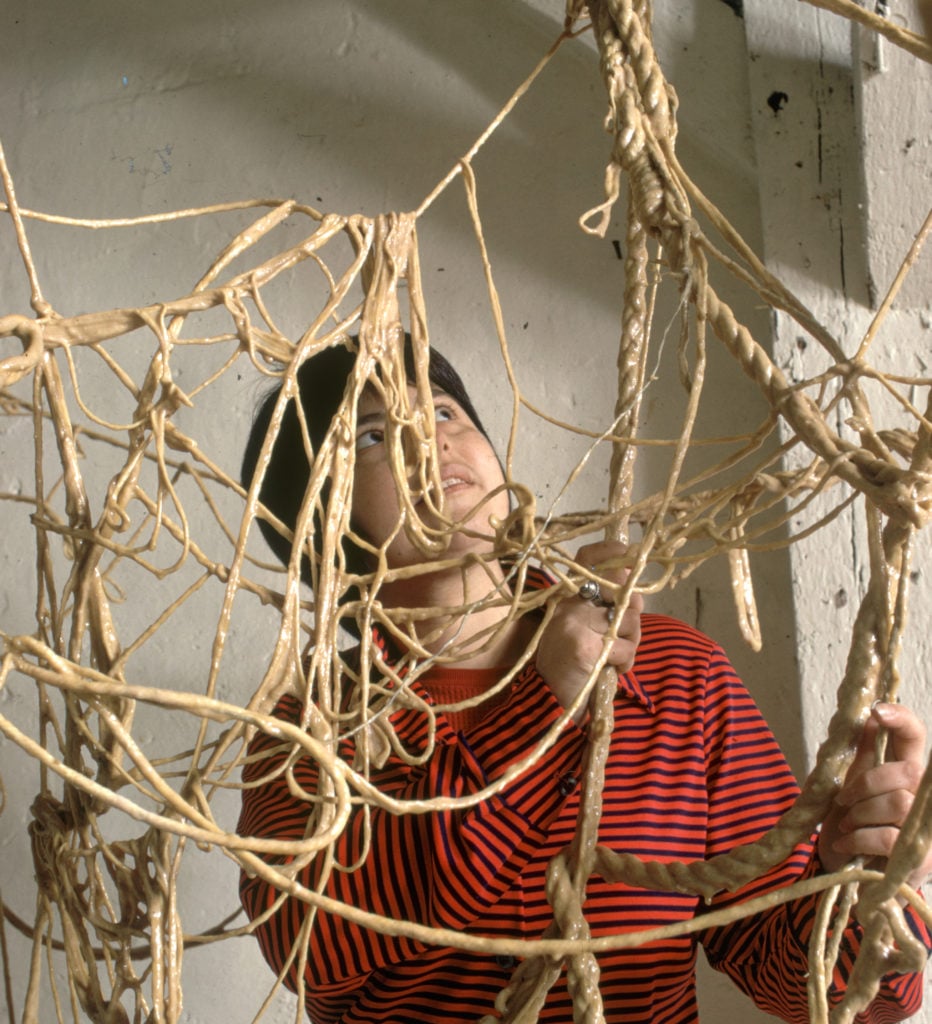
The artist Eva Hesse working on sculpture in New York in 1969, a year before her death at 34. Photo by Henry Groskinsky/Time & Life Pictures/Getty Images.
Eva Hesse, I learned about her during my studies in New York. I was immediately touched by her sensitivity and intuitive relation to material. It was the first female artist monograph I bought as a student. From looking at her practice, I decided that intuition is more powerful than reason when it comes to art, and perhaps in everything in life.
—Lorraine Kiang Malingue, director, Edouard Malingue Gallery, Hong Kong
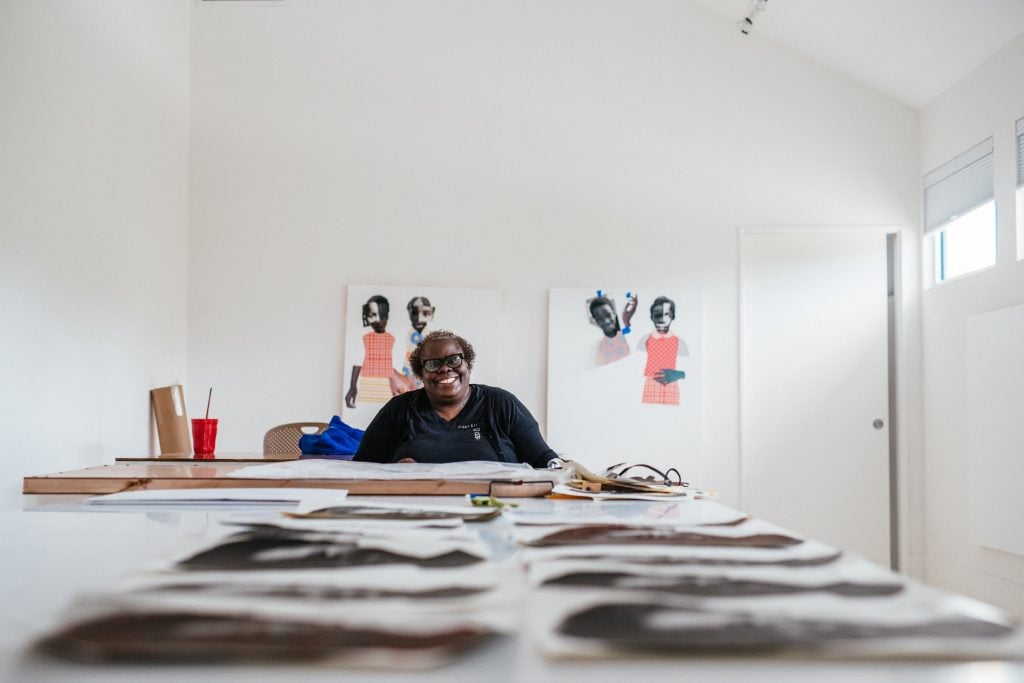
Deborah Roberts. Photo by Mark Poucher. ©Deborah Roberts. Courtesy the artist and Stephen Friedman Gallery, London.
The artist Deborah Roberts inspires me because of her strong work ethic. I also appreciate her opening her studio doors to offer advice and encouragement to artists like me.
A curator introduced me to Deborah at a show a few years ago and shortly afterwards, Deborah invited me to visit her studio in Austin, Texas. It was awesome to step into her bustling art space and see some of her beautiful pieces being created. We talked about a lot of things: from studio visits to who is the best builder of canvas frames in town. One bit of advice Deborah gave me was to push more to show my work outside of Austin. I am really glad I took that advice. Deborah’s art moves me, and she is someone I can reach out to whenever I have art business questions.
—Dawn Okoro, artist
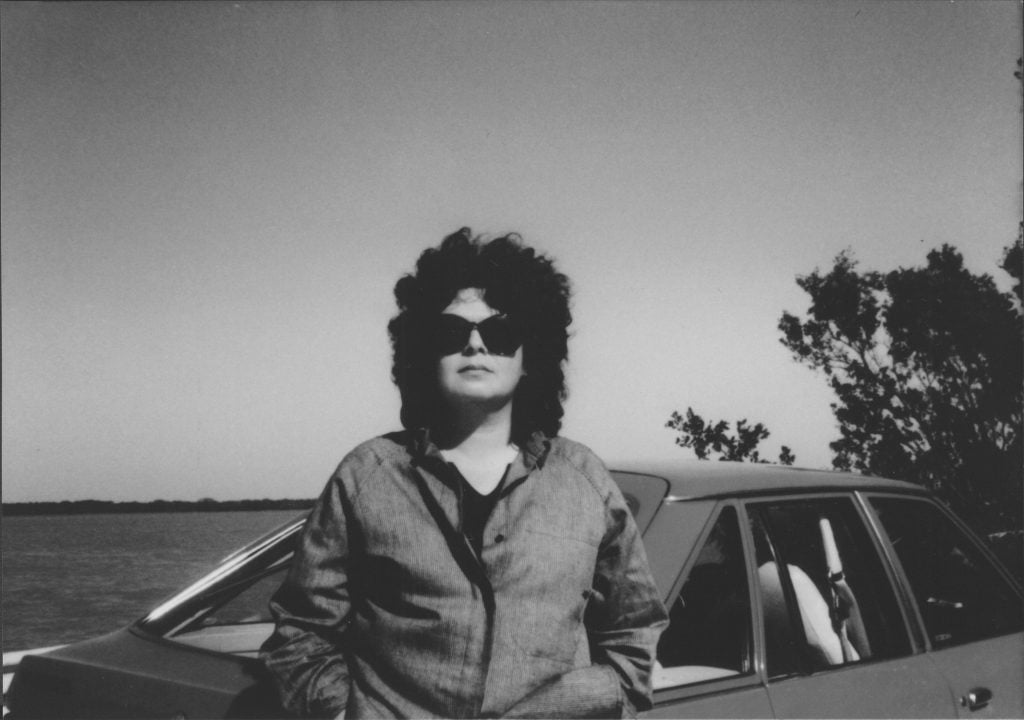
Michell Cliff. Author photo courtesy University of Minnesota Press.
I began my artistic career in the 1970s; I reference my 99-year old mother who owned and operated a beauty shop in North Philadelphia. Her interest in quilt-making and styling was and still is central to my art practice.
Poet and author, Michelle Cliff’s words inspire me daily as a photographer and writer because of her candor about the responsibility of black women artists in reevaluating the image of the black woman as an object. In her 1992 essay “Object into Subject,” she writes, “Black women have been doubly objectified as black, as women; under white supremacy, under patriarchy. It has been the task of black women artists to transform this objectification: to become the subject commenting on the meaning of the object or to become the subject rejecting the object and revealing the real experience of being.”
—Deborah Willis, artist
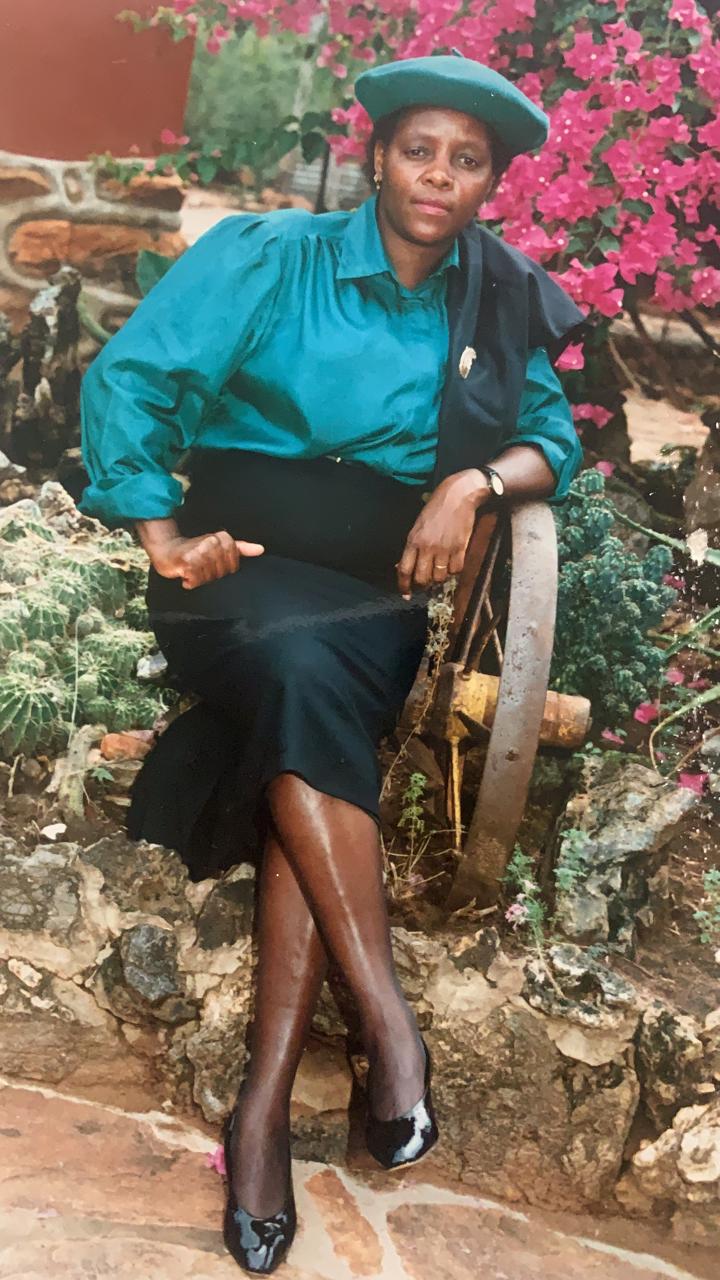
Nnuku Elizabeth Tshabalala, grandmother to artist Zandile Tshabalala.
My grandmother Nnuku Elizabeth Tshabalala is most certainly my source of inspiration and strength. I would describe her as a woman who is very assertive in what she does and is vocal about the things she thinks and likes. Her bold nature has rubbed off of me.
—Zandile Tshabalala, artist
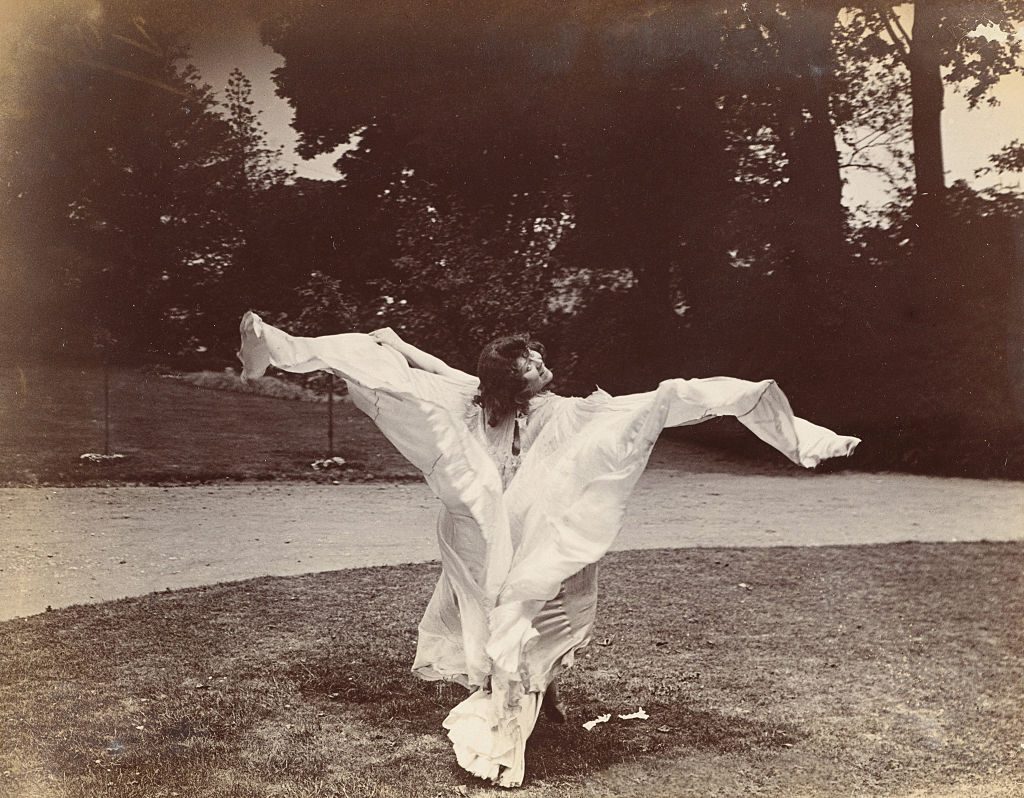
Loie Fuller (1862–1928) dancing in around 1900. Photo by adoc-photos/Corbis via Getty Images.
The dancer Loie Fuller inspires me because of the way she fed her creativity with contemporary technological and scientific innovations. She was friends with Pierre and Marie Curie, and after they discovered Radium and x-rays, she projected images of human cells onto her flowing costumes as she danced. She even performed a glowing ‘Radium dance’ before its dangers were realized.
She was radically innovative and inspired a whole range of artists—from Toulouse Lautrec to Auguste Rodin. Additionally, her work with light and shadow fascinated glass designers Lalique at Venini, who made sculptures inspired by her dance and costumes.
—Karen LaMonte, artist
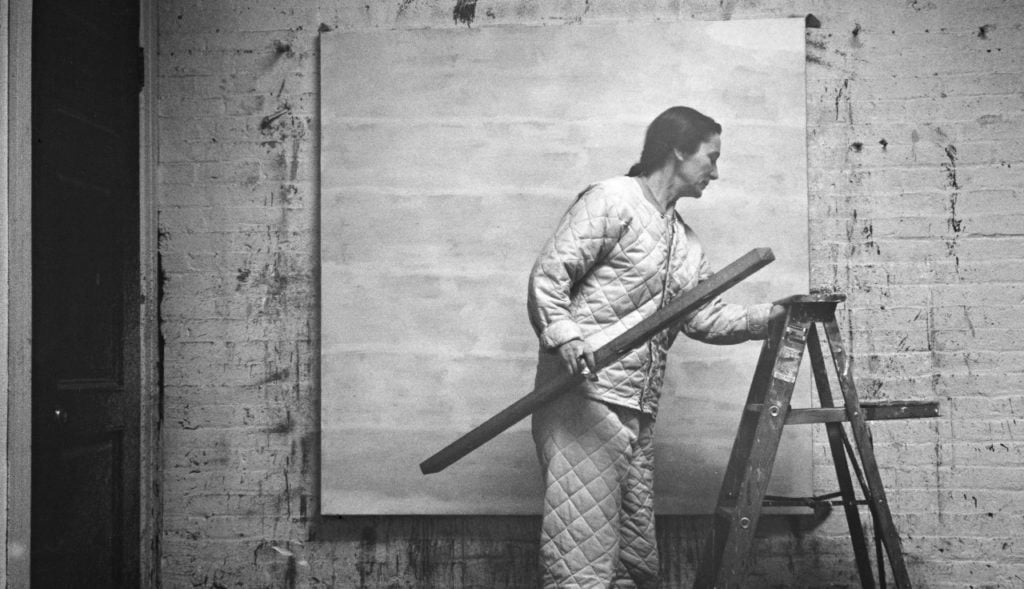
Alexander Liberman, Agnes Martin with Level and Ladder (1960). Photography Archive, Getty Research Institute. Photo ©J. Paul Getty Trust.
I was most influenced by Agnes Martin. I was influenced by her clear way of judging and seeing the quality of each of her paintings. Destroying those she thought missed.
Her total way of being an artist impressed and influenced me.
—Pat Steir, artist

Stephanie Urdang. Photo courtesy of Stephanie Urdang.
Stephanie Urdang is a brilliant esoteric healer and writer who inspired me with her meaningful work and her way of living a creative, rewarding life completely outside of societal norms, specifically as an independent woman. Stephanie elevates others to be empowered by their own free will. I aspire to be able to pass that on someday in my own way.
—Mari Spirito, executive director and curator, Protocinema, New York
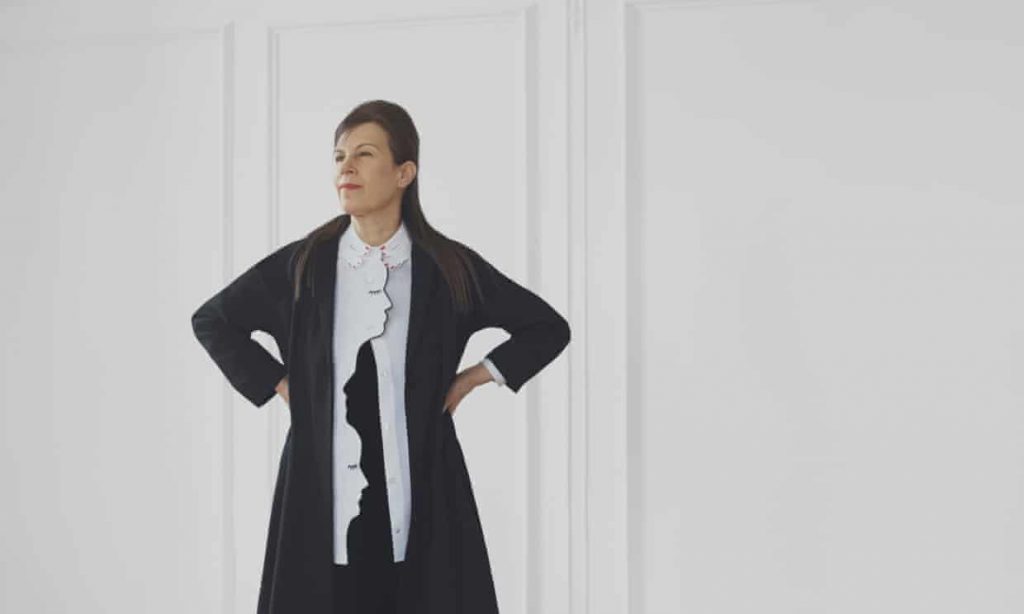
Maureen Paley inside her gallery in Hove, Morena di Luna. Photography by Devin Blair.
Maureen Paley and her gallery’s history are a true inspiration to me personally and to the founding of Independent. Coming out of a punk and DIY ethos, she has inspired my thinking about what it means to successfully sustain an ever-relevant, insightful perspective on art, artists, and ideas.
She’s a legendary and successful gallerist who has championed artists while preserving her genuine curiosity and curator’s edge. One of her many missions that is true to my heart is “to connect with a community beyond the walls of the gallery.” Maureen Paley has thrived without buying in or selling out. I think this inspires many of us who have the same dreams of freedom and independence.
—Elizabeth Dee, founder and CEO, Independent Art Fair, New York
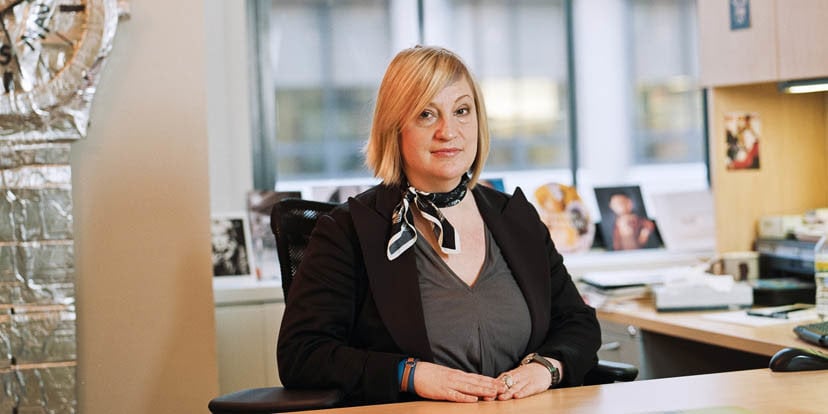
Dr. Kathy Battista.
Dr. Kathy Battista is an esteemed academic and educator who has researched, curated, and championed female artists since the outset of her career in the mid-’90s. She focused critical attention and scholarship on Mary Kelly, Carolee Schneeman, and Judy Chicago when feminist art was still considered a peripheral field. Despite her Ph.D. committee telling her there was “no interest” in this movement, she persevered and wrote her dissertation on body-oriented feminist art in 1970s London.
After 20 years of teaching at the M.A. level, Kathy has touched the lives of so many art professionals all over the world. Unwavering, she has upheld that the artists (no matter their level of experience or creative field) and their work should remain at the heart of everything we do. Her next chapter is now focused on preserving the legacy of artists—a topic she explores in depth in her recently published book Creative Legacies: Artists’ Estates and Foundations.
—Nicole Bray, founder, Mercer Contemporary, New York
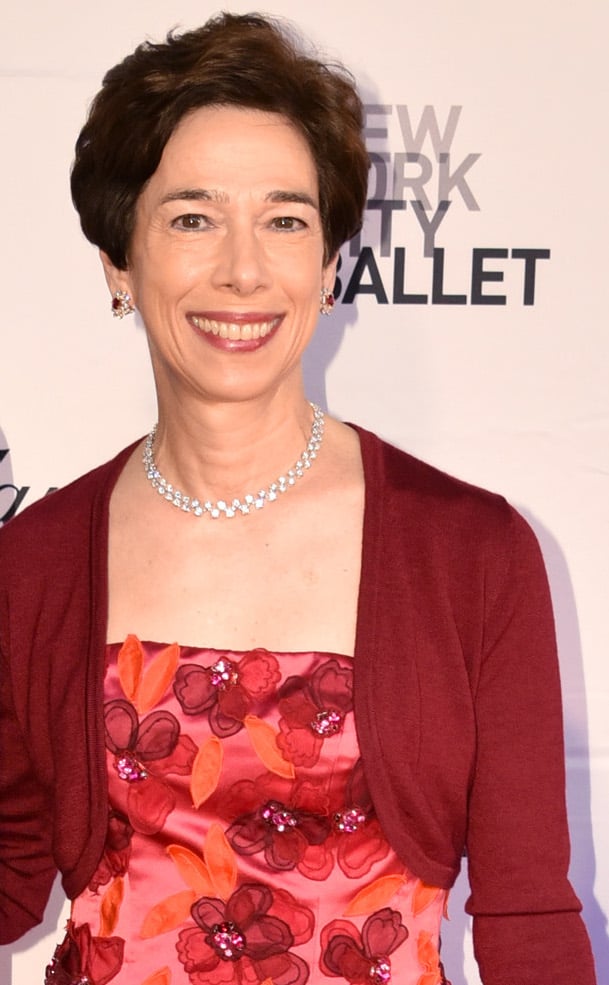
Barbara Vogelstein. Photo by Jared Siskin, ©Patrick McMullan.
Barbara Vogelstein, my longtime advisory client and friend, collector of modern and contemporary art, and chair of the board of the Brooklyn Museum. As a patron and philanthropist, I admire Barbara’s longstanding commitment to diversity, equity, and the fact that she always asks “what can I do for them,” never “what can they do for me.” As a collector, I admire Barbara’s patience, persistence, and unfailing belief that the right artwork is worth waiting for. And finally, as a friend, I appreciate her belief that good things will always come when you pair great art with a glass of champagne.
—Cristin Tierney, director, Cristin Tierney Gallery, New York

Michelle Obama. Photo by BET Awards 2020/Getty Images via Getty Images.
Michelle Obama, with whom I had the honor of working for seven years as the executive director of the President’s Committee on the Arts and Humanities before coming to the Smithsonian, was a profound inspiration to me.
There are many things to admire about her, but time and again I was impressed by how she combined the power of the arts and the power of her platform as First Lady to both raise the bar and lower the barriers. She took risks, spotlighting artists who were emerging or unexpected to bring fresh energy to the halls of the White House. She was interdisciplinary, using design and culinary arts as well as the visual and performing arts to inspire and uplift. And she was fiercely focused on access and equity, welcoming thousands of kids and young artists to the White House and making sure the broadest possible tapestry of voices could share that spotlight.”
—Rachel Goslins, director of the Smithsonian’s Arts + Industries Building, Washington, DC
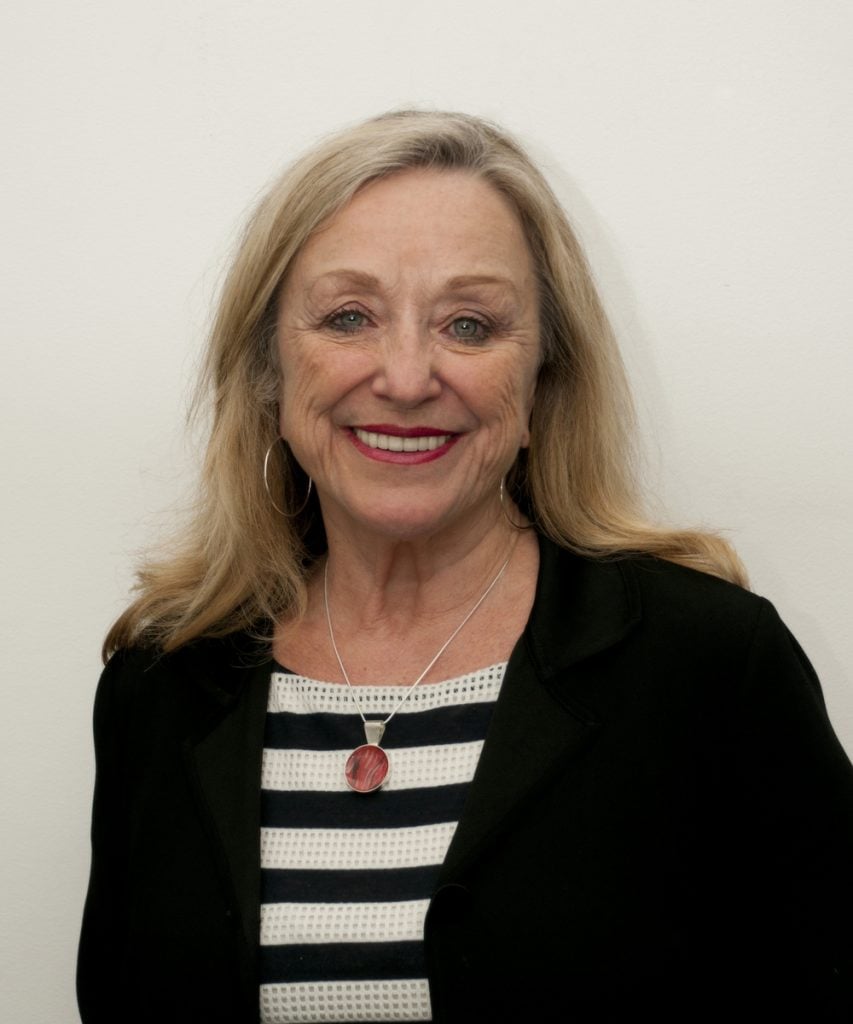
Anne Livet. Photo courtesy of Livet Reichard Company.
I am endlessly inspired by my former boss Anne Livet, who taught me how to be an adult when she hired me to work at Livet Reichard Company when I was 21 years old. She has taught me much more about life as my friend. Anne never runs out of energy, can talk to anyone, and is able to find humor in the most challenging situations.
—Cybele Maylone, executive director of the Aldrich Contemporary Art Museum, Ridgefield, Connecticut
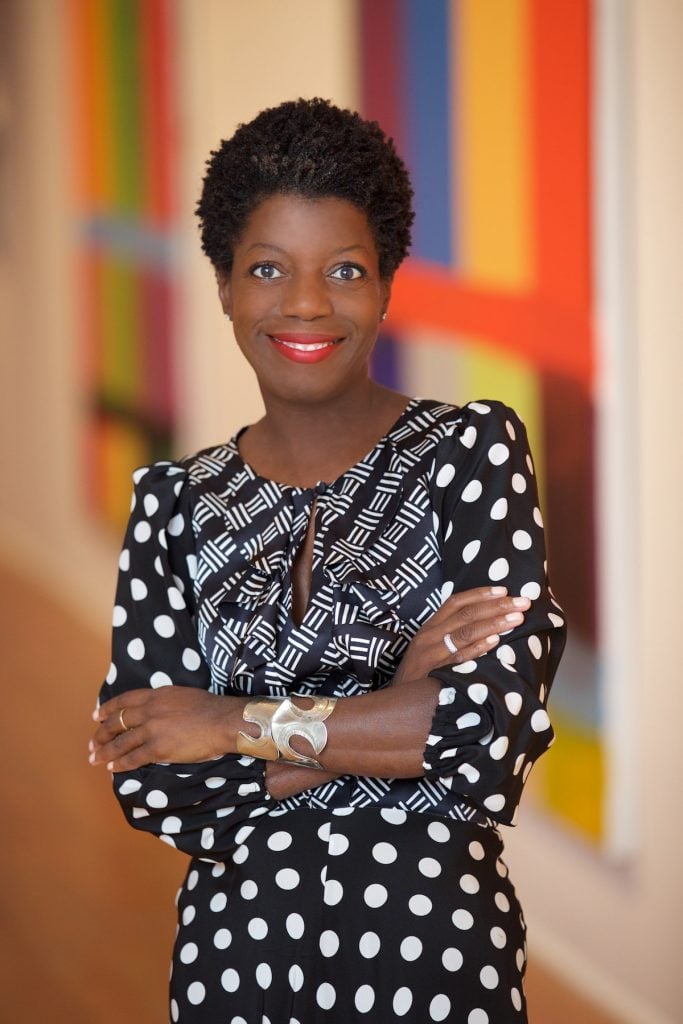
Thelma Golden. Photo by Julie Skarratt.
Everyone knows that Thelma Golden is a force to be reckoned with. What I find most inspiring is her ability to make everyone feel welcome, always. At her annual Studio Museum Spring Luncheon, Thelma manages to move about the room greeting every single person with care, and for the one or two minutes that she has with you, she makes that moment feel important. That’s a gift I admire, among her many other attributes. I first connected with Thelma at a celebration for artist Nari Ward, who I’ve been lucky to work with at Lehmann Maupin for years. As we spoke, we realized we had both grown up in Long Island, and I have felt a special kinship ever since.
—Carla Camacho, partner at Lehmann Maupin, New York
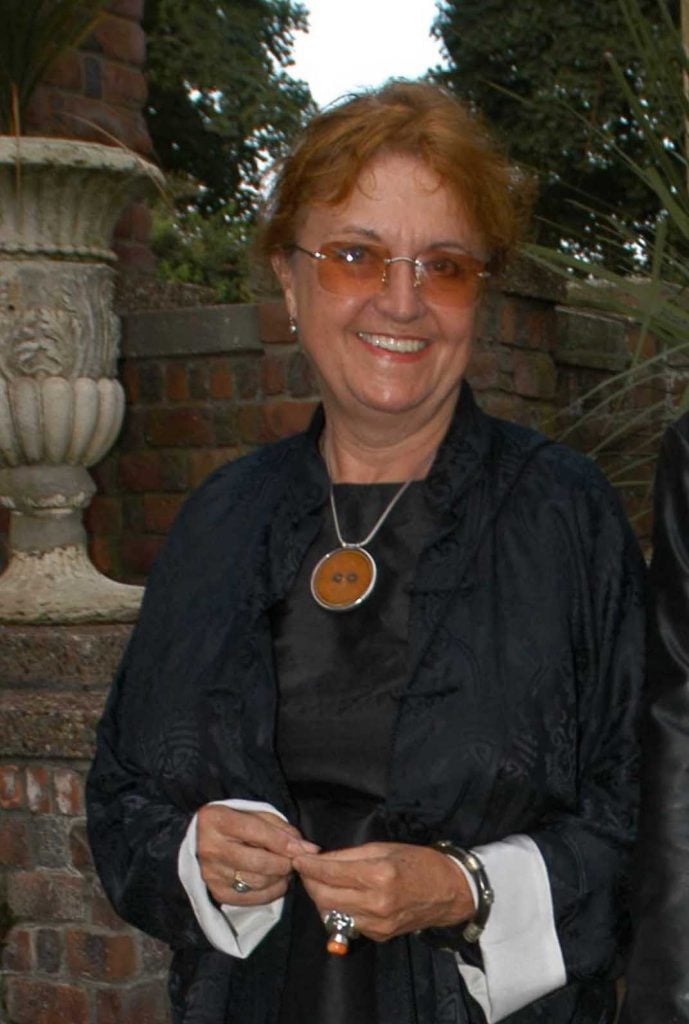
Michelle Stuart. Photo ©Patrick McMullan.
I am endlessly enthralled with Michelle Stuart’s fearless quest for adventure and steadfast personal vision. Working in the male-dominated field of land art from its very beginnings in the 1960s, she carved a path that has never deviated from her true north. With the utmost integrity, she listens to the land and finds poetry and mystery buried deep in its strata—not seeking to expose or amplify it but just to remind us that it has always been there.
One of the rare pleasures of my job is when I get to engage in meaningful conversations with my heroes. I’m looking forward to hosting a discussion with Michelle on March 24, and will savor the opportunity to gain a deeper understanding of the things that have inspired her—from childhood drives through the desert to tracing the paths of her ancestors to the South Pacific, and everything in between.
—Betsy Johnson, assistant curator, Hirshhorn Museum & Sculpture Garden, Washington, DC
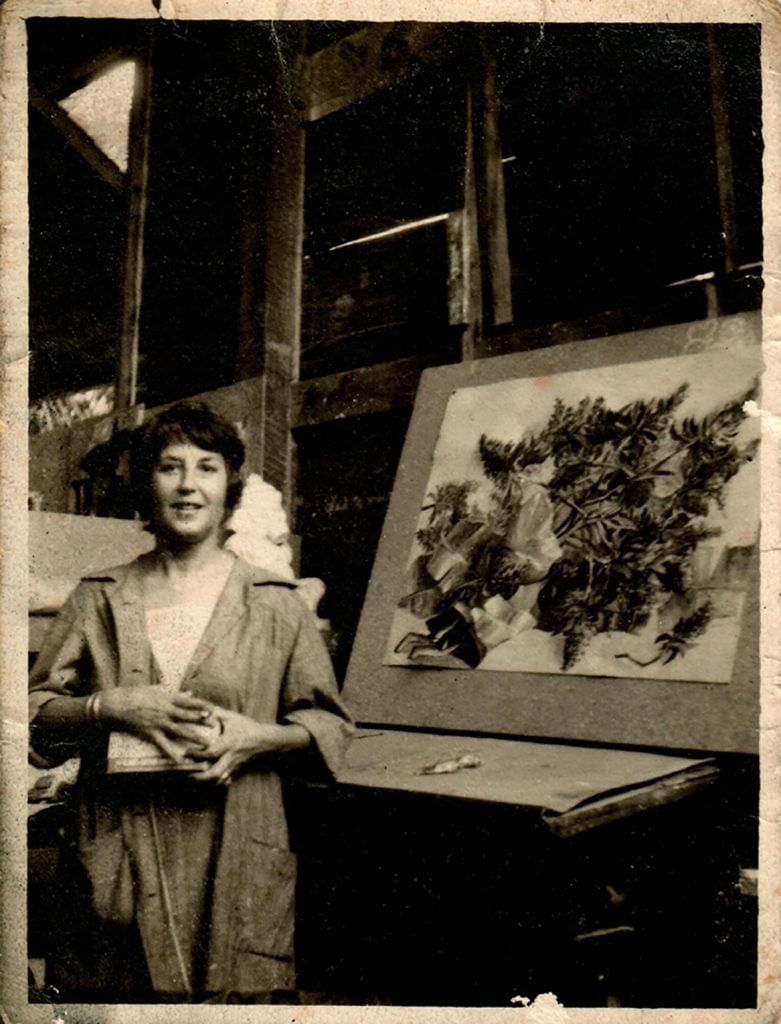
Mary Z. Johnson in the studio in Bangkok, Thailand, 1961. Courtesy of Paula Cooper Gallery
The catalyst for my life’s engagement was—yes—my mother, who had a passionate desire to be a great painter, and as a child, I grew up with and supported that dream. Art has always been an integral part of my life and being supportive is my connection to it.
—Paula Cooper, founder of Paula Cooper Gallery, New York
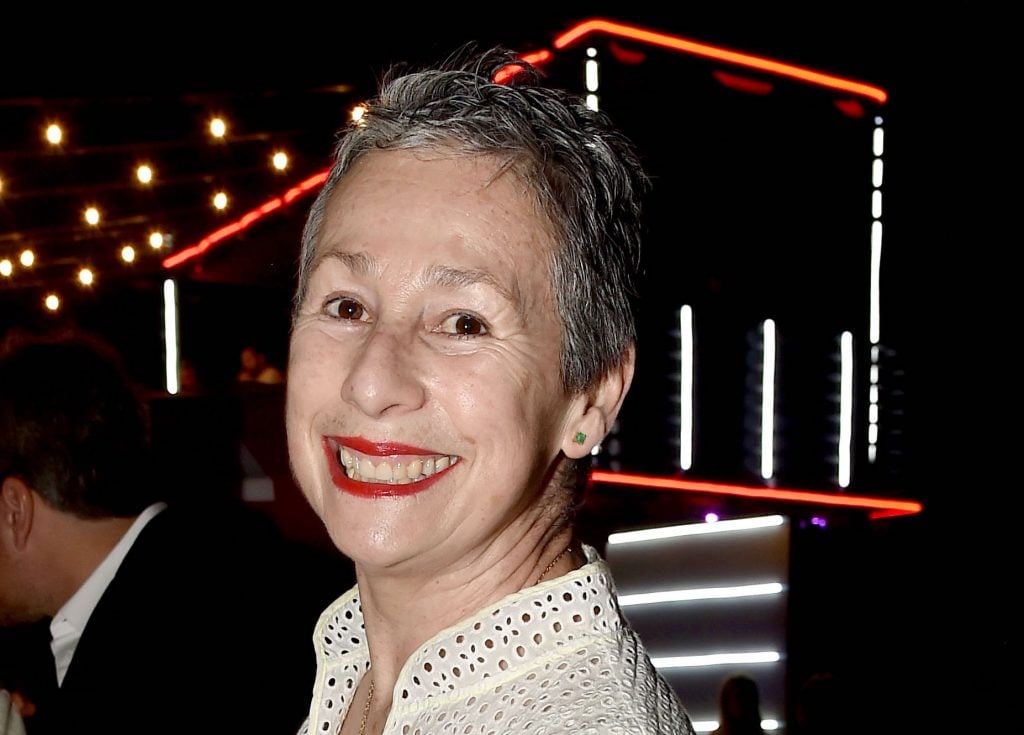
Cristina Grajales. Photo ©Patrick McMullan.
I continue to be inspired by my longtime mentor and friend, Cristina Grajales of Cristina Grajales Gallery. As one of the most distinguished and trailblazing voices in the design world, Cristina has helped me to chart my own path in the art world, constantly pushing me to take risks and grow in my career path. I admire her fierce interest in challenging the status quo and her passion for bringing forth unique, emerging voices representative of our mutual Latin American heritage.
—Carolina Alvarez-Mathies, deputy director at Dallas Contemporary
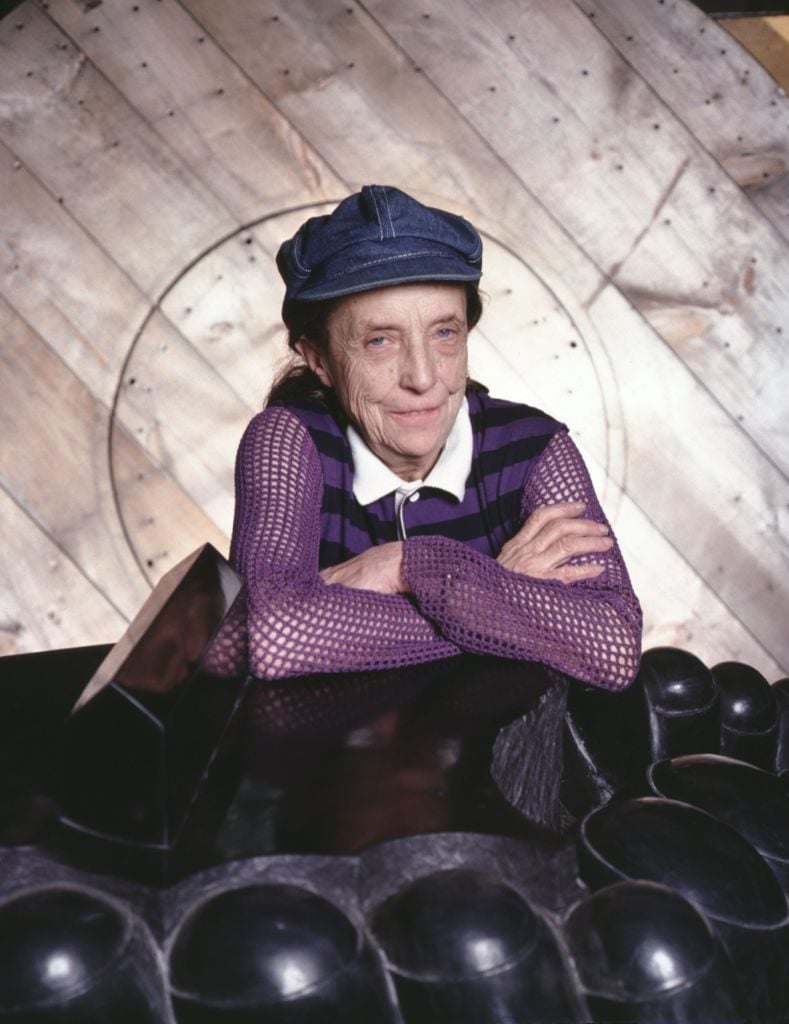
French-American artist and sculptor Louise Bourgeois photographed in her studio in Chelsea, Manhattan, 1982. Photo by Jack Mitchell/Getty Images.
I have long been inspired by Louise Bourgeois, whose multidisciplinary practice challenged conventions and blurred the boundaries between art and design. Her career as an artist began with her childhood in Paris assisting in her parents’ tapestry workshop, and that foundation in craftsmanship was critical to the sculpture and installation work she’s best known for today. She was also a pioneering feminist (though she rejected this label) and throughout the male-dominated art world of 1950s New York, was drawn most closely to feminine subjects. Her work is visionary and so many of the artists with whom I work today have cited her influence on their own practices.
—Ashlee Harrison, director, Carpenters Workshop Gallery, New York
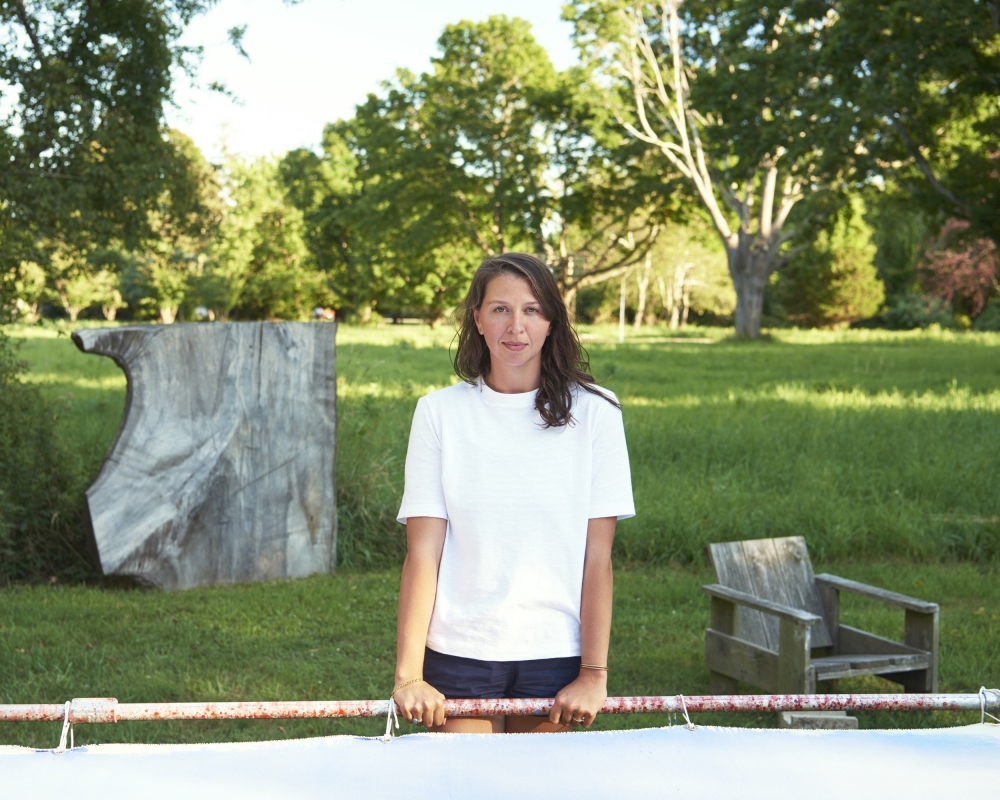
Sam Moyer. Photo by Jason Schmidt.
One could imagine that during the isolation of the pandemic we would all crawl into bed, Netflix and wine in hand, and lament the lost intimacy of our female friendships. That the absence of our daily social interactions would lessen the appreciation we feel for our communities, and yet quite the opposite has happened.
Looking back over the last year, I feel inspired by many women in my life but one, in particular, has risen to meet this moment with unwavering strength and a sense of determination. Sam Moyer has created within the last year her most ambitious public exhibition to date, Door for Doris, and mounted an exquisitely beautiful exhibition, Tone, all while working within the confines and limitations of quarantine. I am proud to represent Sam as her gallerist, but more importantly, count her as a friend and comrade in motherhood—our babies were born within four months of each other in 2019. Sam has been a daily personal source of inspiration, in addition to invaluable advice and a playdate pod mate for my daughter. But more importantly, the art she has created over the last year provides inspiration, a moment of contemplation, and hope for brighter days ahead.
—Lauren Kelly, partner of Sean Kelly Gallery, New York
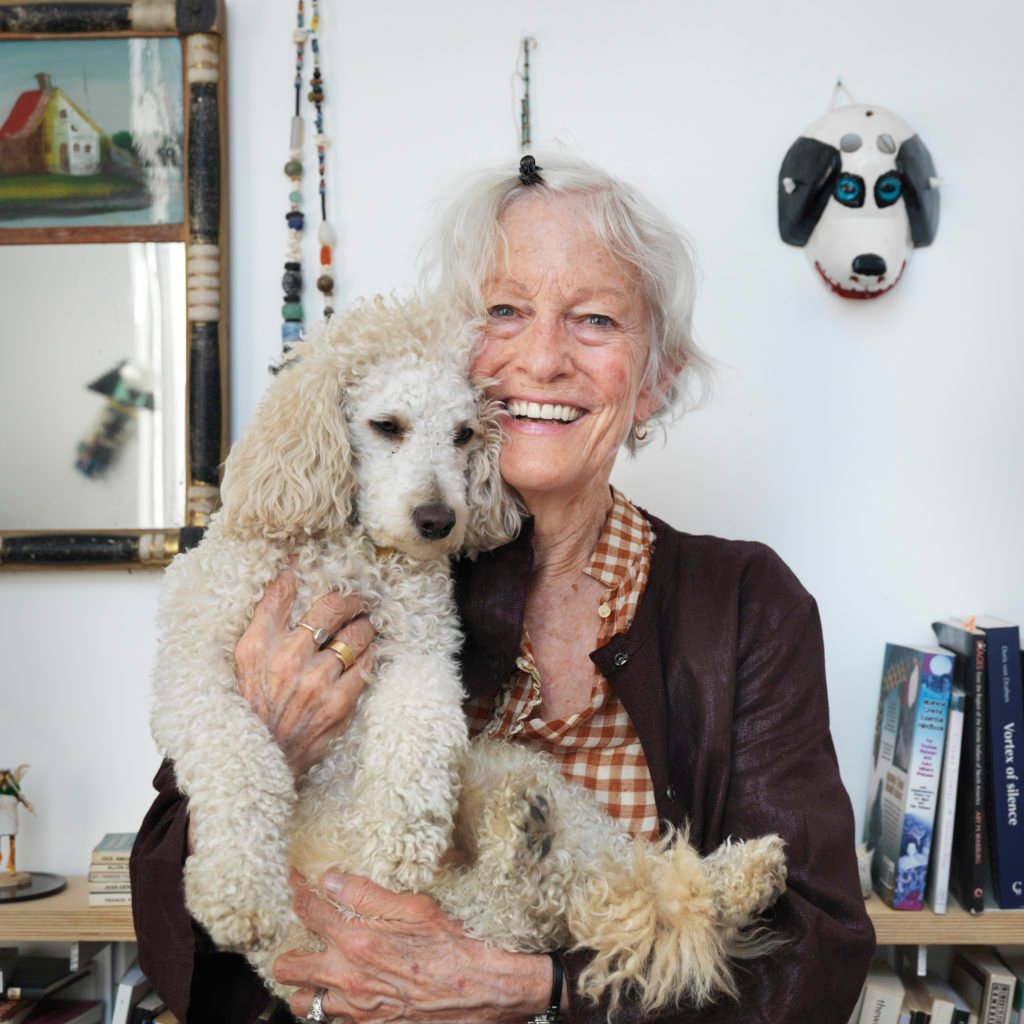
Joan Jonas in her New York studio, 2011. © Marco Anelli.
Joan Jonas has been making great art her entire life but I observed her fierce persistence when she carried on despite a lag in support. The stories Joan tells are broad, wrought with great beauty and essential to experience in our fragile world.
—Arlene Shechet, artist
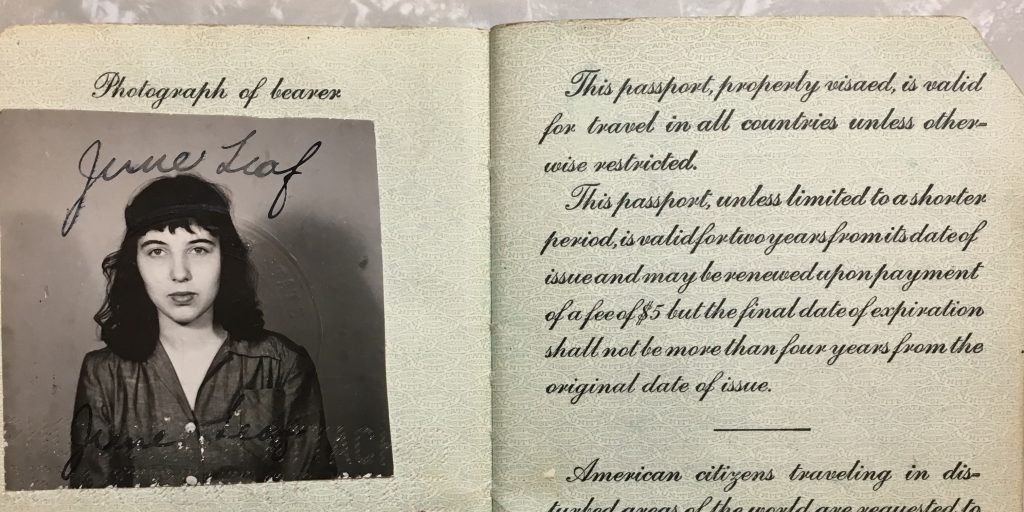
In January 1948, June Leaf left her studies at the New Bauhaus in Chicago to start working full-time in the studio. That year she secured a passport and went to work in Paris. Photo courtesy June Leaf.
When I began my life activity in my studio, I was not aware of any woman that could be said to have inspired me. That was in 1948. Once back then, when someone praised me, I remember saying… “someday, there will be lots of girls like me.” But if I look back, names come to me such as Germaine Richier, who stood out. So much has changed in all this time. Almost more than anything, the rapidity now with which the world recognizes women impresses me the most when I think about your question.”
—June Leaf, artist
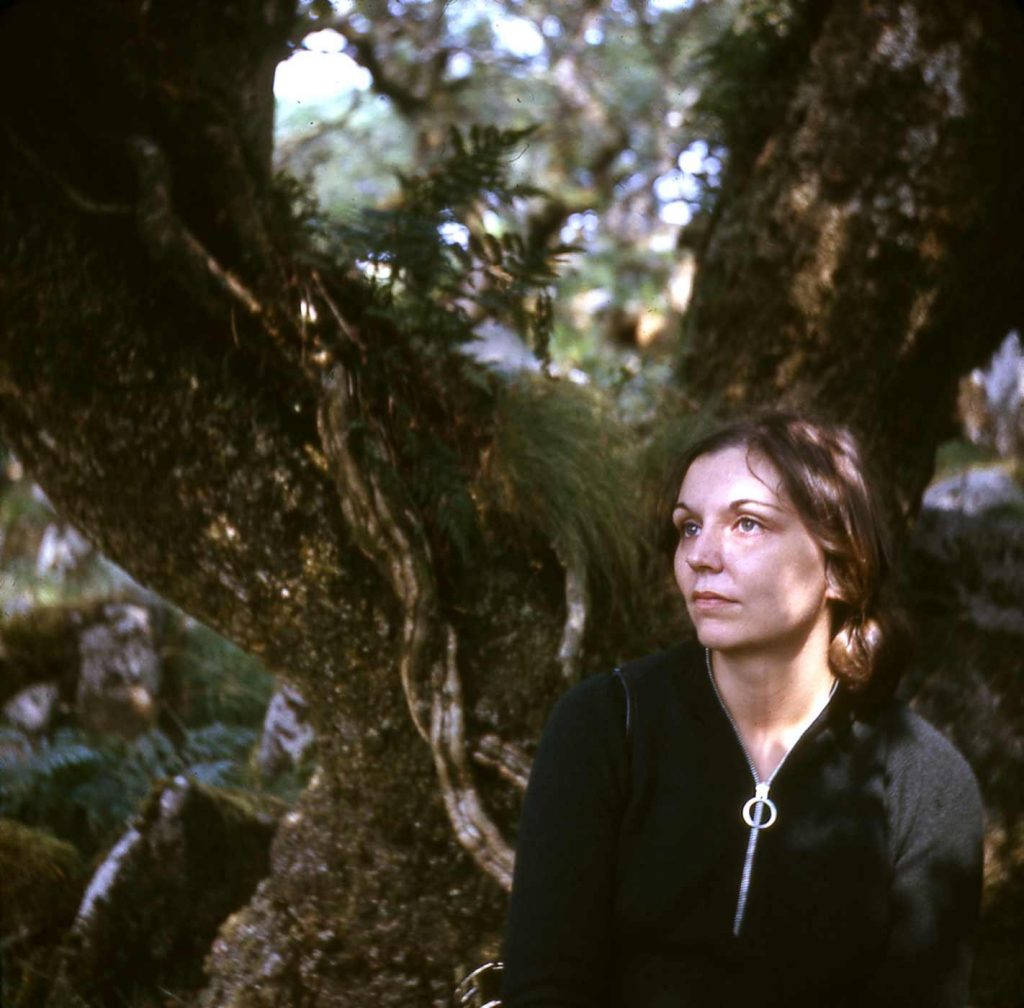
Nancy Holt. Photo courtesy of the Holt Smithson Foundation.
Nancy Holt is an artist who an artist whose ideas vibrate so forcefully for me. The more research we do at Holt/Smithson Foundation, the more we discover how advanced her ideas were in her own time, and how they resonate with the present. Holt paid attention to the systems that structure perception and shows us how we see. She brings the stars down to earth, focuses our vision, and exposes the open-ended systems of the world around us.
—Lisa Le Feuvre, Executive Director of Holt/Smithson Foundation, Santa Fe, New Mexico
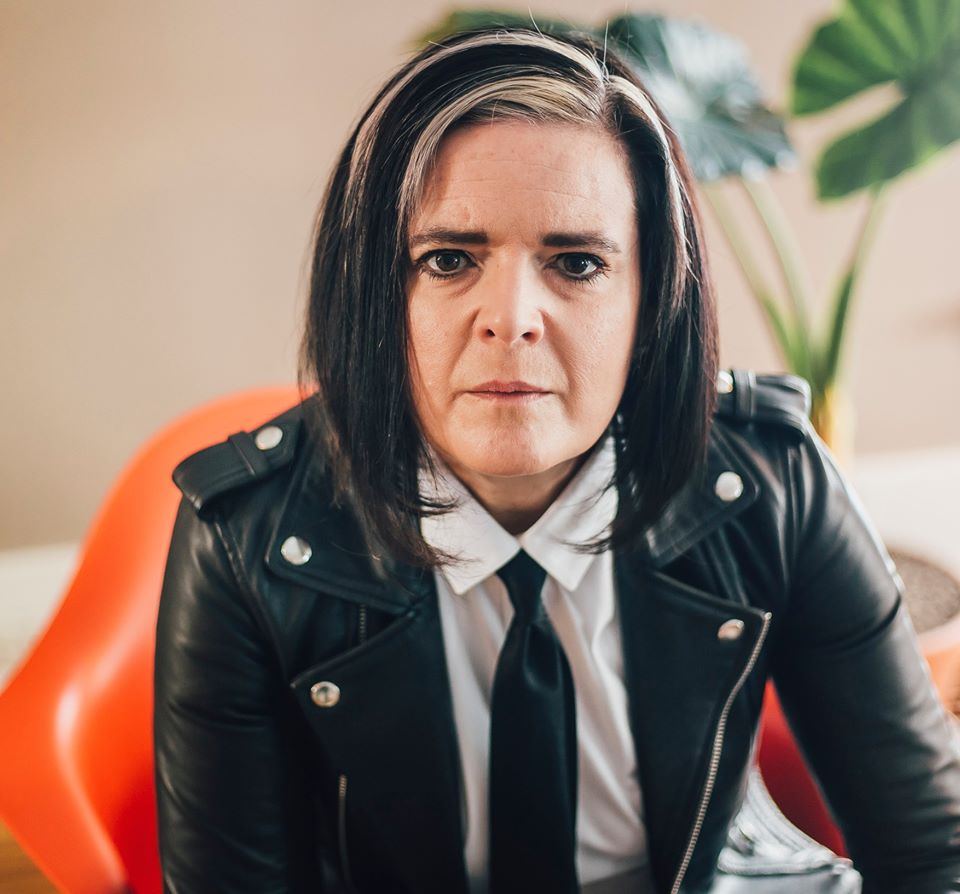
Jill Casid, Professor. Courtesy of the University of Wisconsin, Madison.
As much as I try not to reduce my life experiences to clichés, I’ve always said that I wouldn’t be where I am today if it weren’t for Jill Casid. My thesis advisor at the University of Wisconsin, Madison, Jill transformed my approach to thinking, writing, and language. They have modeled what support looks like by being there for me, always, and by teaching me that critical thinking—expressed carefully and attentively—can be a form of affection. Those of us who shine under her tutelage refer to ourselves as #HouseOfCasid in an endearing way of paying homage to the great Jill Casid.
—Marcela Guerrero, assistant curator at the Whitney Museum of American Art, New York